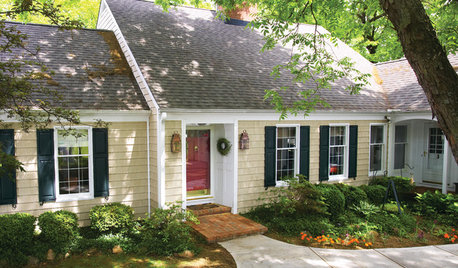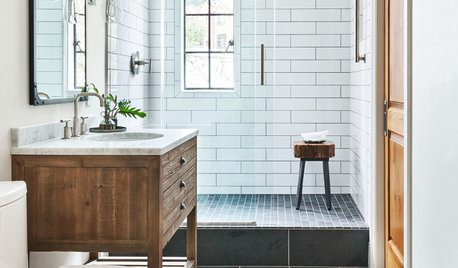Gourds, mold and discolored results
Mearth
18 years ago
Related Stories

KITCHEN WORKBOOK15 Elements of a Traditional Kitchen
Small details take center stage with decorative moldings, glazed finishes, raised panels and more
Full Story
PAINTINGKnotty to Nice: Painted Wood Paneling Lightens a Room's Look
Children ran from the scary dark walls in this spare room, but white paint and new flooring put fears and style travesties to rest
Full Story
COLOR8 Reasons to Paint Your Interior Trim Black
Hide imperfections, energize a space, highlight a view and more with a little bit of darkness that goes a long way
Full Story
PRODUCT PICKSGuest Picks: Bright New Style for a Craftsman Living Room
How to highlight the architecture in a 1920s bungalow? Try midcentury furniture and colorful accessories
Full Story
UPHOLSTERYSeeking a Quiet, Relaxed Spot? Try Upholstering Your Walls
Upholstery can envelop an entire room, a framed panel or a single wall. See some design options and learn what to expect
Full Story
MIDCENTURY HOMESHouzz Tour: An Eichler Remodel Spawns a Design Career
A homeowner finds her true calling upon redesigning her family's entire California home
Full Story
KIDS’ SPACESWho Says a Dining Room Has to Be a Dining Room?
Chucking the builder’s floor plan, a family reassigns rooms to work better for their needs
Full Story
TILEEpoxy vs. Cement Grout — What's the Difference?
Grout is grout, right? Nope. Cement and epoxy versions have different appearances, durability and rules of installation
Full Story
HOUSEKEEPINGHow to Wash Your House
Avoid damage to siding and plants while getting your home's exterior shining clean, with this guide to using pressure washers and hoses
Full Story
BATHROOM WORKBOOK12 Ways to Get a Luxe Bathroom Look for Less
Your budget bathroom can have a high-end feel with the right tile, stone, vanity and accessories
Full StorySponsored
Custom Craftsmanship & Construction Solutions in Franklin County






kms4me
bethlaf
Related Professionals
Citrus Heights Landscape Architects & Landscape Designers · Garden City Landscape Architects & Landscape Designers · Estelle Landscape Contractors · Federal Way Landscape Contractors · Fort Worth Landscape Contractors · Gaithersburg Landscape Contractors · Kaneohe Landscape Contractors · Kearny Landscape Contractors · Methuen Landscape Contractors · Newberg Landscape Contractors · Peachtree City Landscape Contractors · Westchester Landscape Contractors · Hueytown Landscape Contractors · Little Rock Roofing & Gutters · Sebring Roofing & Guttersterilu
donna_stevens
pogoduck